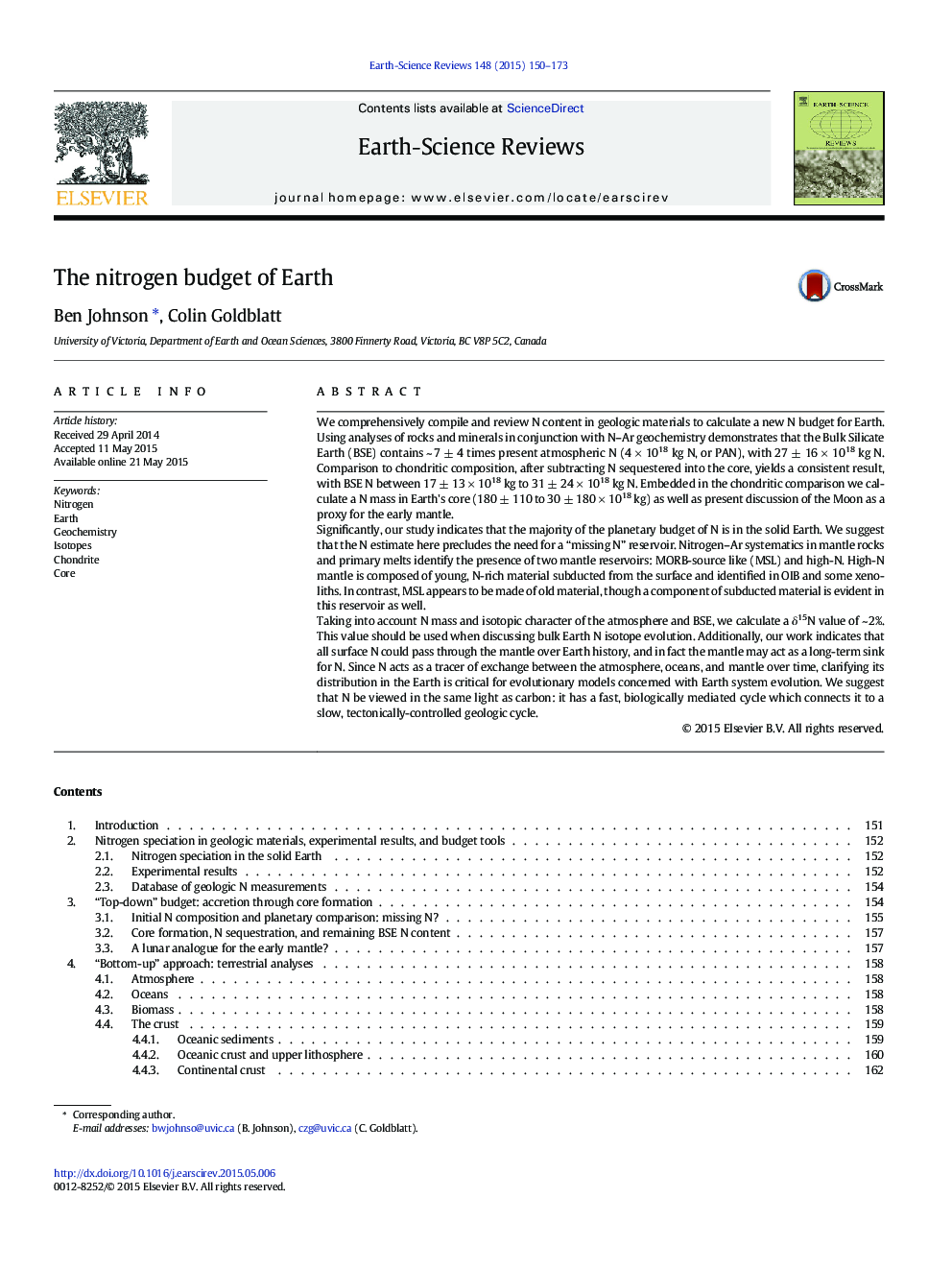| کد مقاله | کد نشریه | سال انتشار | مقاله انگلیسی | نسخه تمام متن |
|---|---|---|---|---|
| 4725649 | 1639954 | 2015 | 24 صفحه PDF | دانلود رایگان |
We comprehensively compile and review N content in geologic materials to calculate a new N budget for Earth. Using analyses of rocks and minerals in conjunction with N–Ar geochemistry demonstrates that the Bulk Silicate Earth (BSE) contains ~ 7 ± 4 times present atmospheric N (4 × 1018 kg N, or PAN), with 27 ± 16 × 1018 kg N. Comparison to chondritic composition, after subtracting N sequestered into the core, yields a consistent result, with BSE N between 17 ± 13 × 1018 kg to 31 ± 24 × 1018 kg N. Embedded in the chondritic comparison we calculate a N mass in Earth's core (180 ± 110 to 30 ± 180 × 1018 kg) as well as present discussion of the Moon as a proxy for the early mantle.Significantly, our study indicates that the majority of the planetary budget of N is in the solid Earth. We suggest that the N estimate here precludes the need for a “missing N” reservoir. Nitrogen–Ar systematics in mantle rocks and primary melts identify the presence of two mantle reservoirs: MORB-source like (MSL) and high-N. High-N mantle is composed of young, N-rich material subducted from the surface and identified in OIB and some xenoliths. In contrast, MSL appears to be made of old material, though a component of subducted material is evident in this reservoir as well.Taking into account N mass and isotopic character of the atmosphere and BSE, we calculate a δ15N value of ~ 2%. This value should be used when discussing bulk Earth N isotope evolution. Additionally, our work indicates that all surface N could pass through the mantle over Earth history, and in fact the mantle may act as a long-term sink for N. Since N acts as a tracer of exchange between the atmosphere, oceans, and mantle over time, clarifying its distribution in the Earth is critical for evolutionary models concerned with Earth system evolution. We suggest that N be viewed in the same light as carbon: it has a fast, biologically mediated cycle which connects it to a slow, tectonically-controlled geologic cycle.
Journal: Earth-Science Reviews - Volume 148, September 2015, Pages 150–173
